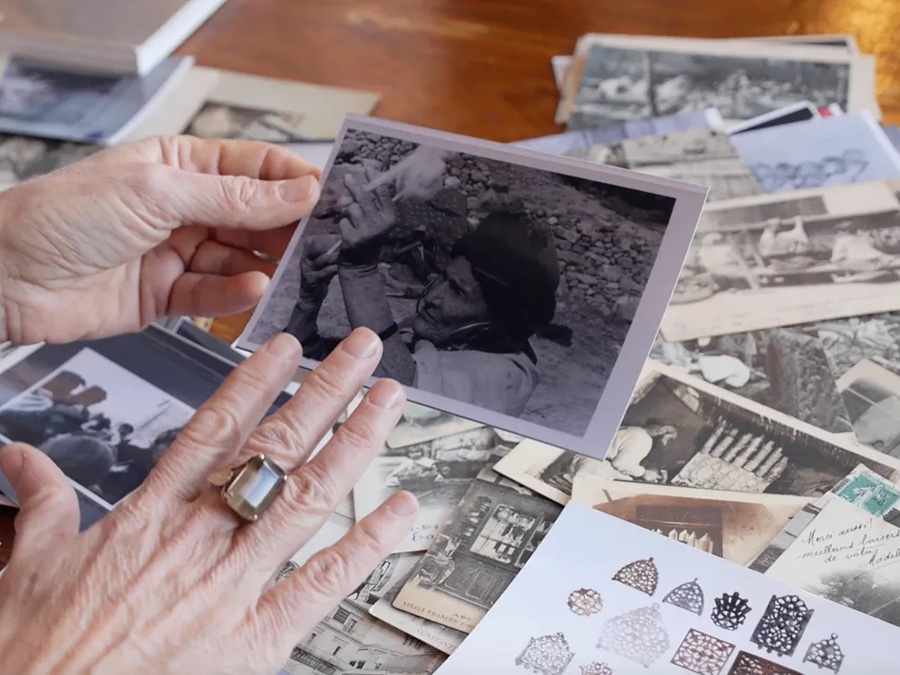
This film travels over open books, looted objects and postcards to look for the imperial foundations of the world in which we live. Within this wide landscape the film focuses on the destruction of the Jewish Muslim world that existed in North Africa, making it imaginable and inhabitable again. Narrated in the first person, by an Algerian Jew and a Palestinian Jew, the film refuses imperial histories of those places. Objects held captive in museums and archives outside of the places from where they were looted are only the visible tip of the iceberg of the mass colonial plunder of Africa. The film explores the substantial wealth accumulated through the extraction of raw materials, labour, knowledge and skills, including the “visual wealth” attained by putting people in front of the colonisers’ cameras.
EN
“Before the colonization of North Africa by the French, this was the world of my ancestors. The film insists on the right of descendants of the Jewish Muslim world to refuse to conceive this world, destroyed by the colonization of North Africa by the French and of Palestine by the Zionists, as over. Speaking in the first person, and in collaboration with Nadia Ammour who sings and reads part of the narrative, the film invites us all into the multipronged project of ‘unlearning imperial plunder.’ In it, we examine catalogs and books, alter and re-contextualize troubling photos by juxtaposing them with information about the circumstances of the plunder, watch an excerpt from the film The Battle of Algiers, pierce coins from which Jewish jewelers used to make jewels, and respond to the call of our Jewish ancestors in the Muslim world who, in the late 1940s, urged their fellow Jews (who spoke, feared, and dreamed in Arabic) to resist the European Zionist campaign to destroy Palestine, and with it the entire Jewish Muslim world.
Speaking as an Algerian Jew, I use the camera to question, and thus refuse, the way Algerian Jews, like other Jews who live(d) in other Muslim countries, were transformed into an extinct species. Though museums reinforce their extinction by displaying their plundered objects as artifacts of a bygone world, through their objects, our ancestors inhabit these museums and await us to resist the ongoing course of their extinction. The film turns these objects, which are usually conceived and displayed as specimen of an irretrievable ‘past,’ into calls to refuse the impositions of imperialism and racial capitalism – including the imposition of ‘History.’ Books, written and unwritten orders, archival documents, photographs, postcards, treaties and declarations, serve as the sites where imperial triumph is declared. The violence entwined with such a triumph is celebrated as the throes of history. But instead of accepting the verdict and treating these documents as sealed or these objects as pieces of art and relics of ‘history,’ the film presents them as invitations to resistance, reinterpretation, and reclamation of a world deemed ‘lost.’”
Ariella Aïsha Azoulay1
- 1Ariella Aïsha Azoulay, “The World Like a Jewel in the Hand”, Cargo Collective, 2022.

